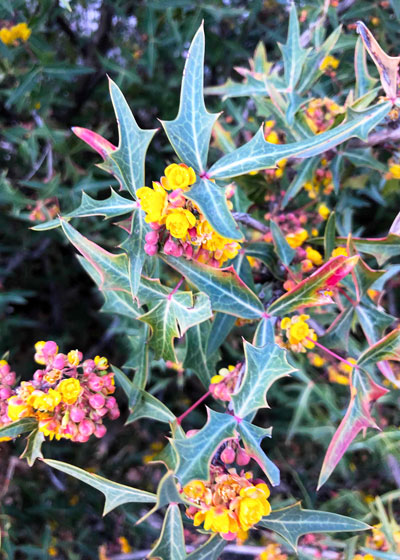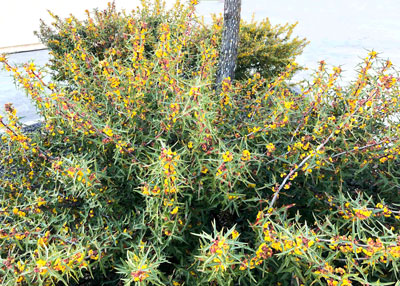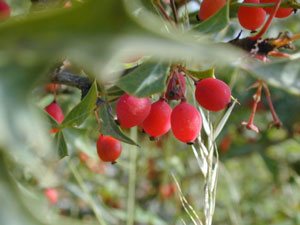Agarita
You might think, because agarita has leaves as thorny as a big roll of barbed wire, that it would be unfriendly to humans around it. Well, gardener, that would be the understatement of all time!

How can I possibly love agarita as much as I do then? Simple. As with my hollies, I can overlook spiny leaves. I don’t sit on my plants! I enjoy them from a distance, even if it’s only from a couple of feet.
So that takes me to the plant’s other attributes. It’s a lovely small shrub that grows slowly to 3 to 5 feet tall and wide. It has evergreen bluish-green foliage borne on upright stems that have their own special character.

Agarita’s flowers are showy, produced in masses in the early part of the spring. They’re bright yellow and they’re great favorites of honeybees. Bright red fruit follows the flowers. If you say the right thing to just the right person you might even get a sampling of delicious agarita jelly – what a sensational treat.

The plant is highly tolerant of drought, as indicated by its native home through big parts of West and Southwest Texas where it grows on the rocky hillsides.
It’s equally well suited to any sunny, well-draining location in your garden. Plant it either singly or in small clumps. However you choose to use it, do start looking for it. You’re most likely to encounter it at nurseries that feature native plants. It’s certainly not mainstream. Although there are a few of us out there who contend that it should be.
Fun facts: Texas A&M lists agarita (also “agarito”) as Mahonia trifoliata. It’s sister to leatherleaf mahonia and cousin to barberries and nandinas. All are in the Barberry Family. Almost all of the plants in this group are known for the brilliantly yellow wood of their stems.
